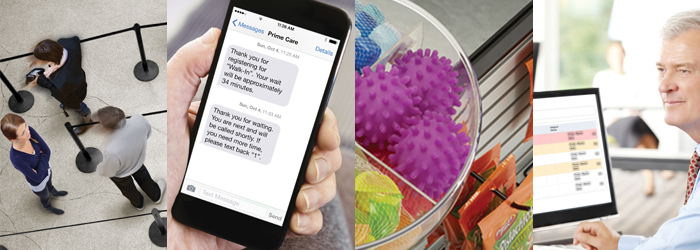
When a customer arrives at a facility that includes queues and service – a restaurant, a retail store, the DMV – they may choose to enter a queue, if there is room, or leave the facility. But at any point, that guest or customer could choose to walk out the door if they feel they’ve been made to wait too long. Not entering a queue or abandoning it completely are two of the most common types of reneging.
Bad Habits Can Lead to Reneging
A poorly managed line can be especially irritating to customers. And you might be surprised at what specifically has people seeing red. Research shows that slow or chatting cashiers irritate nearly 70 percent of customers, while 49 percent of those surveyed are particularly annoyed when there are closed checkout lanes during a busy time. Ignoring these percentages can lead to dire consequences for a business’s bottom line:
- A third of customers report that they have abandoned the checkout line when forced to wait for more than five minutes.
- Nearly half of all customers will actively avoid the retailer or brand in the future if the wait in line was longer than five minutes.
- Customers become frustrated after two and a half minutes of no apparent progress in a queue.
Customers who see that the checkout process is being actively managed, however, are more willing to wait. And there is one way that reneging might even be stopped in its tracks.
Texting a Customer Can Keep a Customer
When it comes to eliminating reneging, companies have a powerful and pervasive tool at their disposal: mobile phones. Just about every customer has a cell phone, and that incredible piece of technology can serve to free a guest from the need to wait in line at all. Using electronic queuing with text alerts lets customers check in and then continue to shop, run errands, or do whatever they need to do while they await a text to let them know it's almost their turn for service. Saving your guests from the torture of a wait in line and giving them the ability to spend their time as they please can keep that guest happy from the start. Imagine the freedom:
- At a restaurant – While patrons are often given buzzers to notify them that their table is ready, this offers limited mobility. With a text message, diners don’t have to stay within a certain square footage or risk missing their call to dine. Visitors can check in with the hostess then take a seat at the bar or walk around outside.
- At the bank – Bank transactions can take 60 seconds, 60 minutes, or any amount of time in between depending on each customer’s needs. Being able to check in with your specific needs, get an estimate on your wait time, and then head off to a cozy corner, your car, or the café next door to check your email, meet a friend, or catch up on work can truly simplify a busy person’s day... and make them very happy with their bank of choice.
- At the mall – Jewelry stores or small boutiques where there are only so many clerks to go around can make customers impatient and frustrated. If someone is in a jewelry store, they may be prepared to make a very large purchase. Text messages allow guests to browse elsewhere in the mall without fearing the loss of their place in line, and business owners don’t have to lament the loss of a sale.
The text message “check in” can be used almost anywhere a queue forms – the grocery store deli, the motor vehicle administration, major transportation hubs. Consult a Lavi expert to learn how to implement this simple but effective method of queue management in your business.











